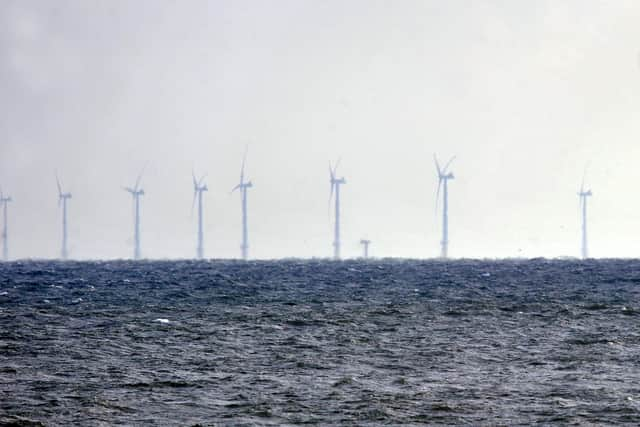Landmark agreements sealed for offshore wind energy in Morecambe Bay
and live on Freeview channel 276
These could begin to generate green electricity by the end of the decade and have the potential to generate 8GW of renewable electricity, enough for more than seven million homes.
Signing these agreements represents a significant moment in the UK’s response to climate change and energy security, and further bolsters the country’s thriving offshore wind industry, reinforcing its position as the second largest offshore wind energy generator in the world.
Advertisement
Hide AdAdvertisement
Hide AdThree of the six projects are located off the North Wales, Cumbria and Lancashire coast, and three are located in the North Sea off the Yorkshire and Lincolnshire coast.


One of those is west of Blackpool and south west of Morecambe Bay, while another is off the coast of Barrow-In-Furness, west of Morecambe Bay .
With agreements signed, developers can now progress their plans for the projects, which have the potential to make a major contribution to delivering sustainable, renewable energy for the UK, as well as the Government’s target of 50GW of offshore wind capacity by 2030.
Dan Labbad, CEO of The Crown Estate, said: “The UK’s offshore wind achievements to date are nothing short of remarkable, and this next generation of projects point to an even more exciting and dynamic future.
Advertisement
Hide AdAdvertisement
Hide Ad“They demonstrate the far-reaching value that our world-class offshore wind sector can deliver for the nation: home grown energy for all, jobs and investment for communities, revenue for the taxpayer, clean energy for the benefit of the environment and a considerate, sustainable approach which respects our rich biodiversity.
“Moving forward, working with our stakeholders to continue unlocking this value is what drives us, and we are more committed than ever to lead the way in ensuring this important benefit is realised for our environment and for the nation.”
Gus Jaspert, Managing Director, Marine, at The Crown Estate, added: “Today marks a significant milestone for the UK on the road to net zero, unlocking green energy potential for more than seven million homes and demonstrating to the world that the UK offshore wind industry is growing at pace to help meet the climate challenge.
“As we face up to energy, climate and biodiversity challenges, we will continue to convene the best minds and support new technologies which will help realise the potential of the seabed as a key component of the UK’s renewable energy system; a home to a thriving natural environment; and a route to energy security.
Advertisement
Hide AdAdvertisement
Hide Ad“I’d like to thank all those who have collaborated with us on this leasing round to ensure the UK continues to lead the way in rebalancing energy provision away from fossil fuels for the benefit of present and future generations.”
Minister for Energy and Climate Graham Stuart said: "Britain's position as the European leader in offshore wind shows no signs of letting up. These six projects demonstrate how areas across the UK can contribute to ensuring Britain meets its world-leading ambition of deploying up to 50GW of offshore wind by 2030.
"Offshore wind is at the heart of our goal to secure clean, affordable and resilient energy supply for all in the UK, while bringing major business, investment and job opportunities along with it.”
The Crown Estate – which manages the seabed, and half the foreshore, around England, Wales and Northern Ireland – will now lead a pioneering programme of work to oversee the development of strategic environmental compensation plans for two protected sites, ensuring that the health of the natural marine environment remains at the centre of development plans.